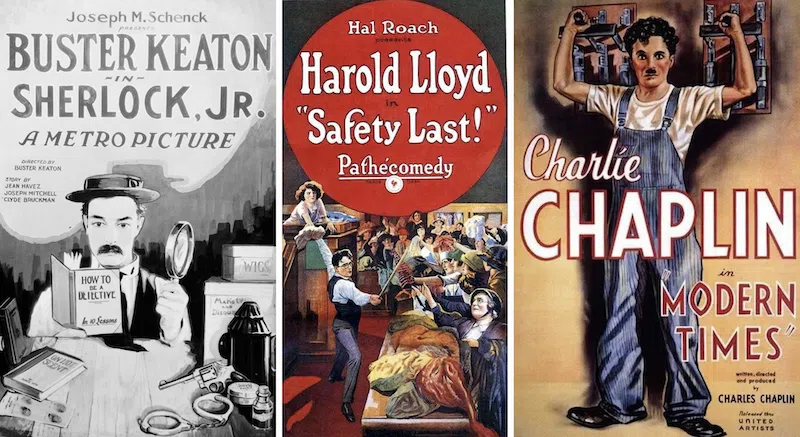

Nowadays, most film studios rely on CGI and green screens, either entirely or as a supplement, to accomplish ambitious stunts. Technology, of course, hasn’t always been advanced enough for such immersive illusions, and yet films from the early 20th century still managed to feature spectacular cinematic effects. They say a magician should never reveal their tricks, but a recent YouTube video by Lost in Time does just that. The video catalogues how Hollywood legends like Charlie Chaplin, Buster Keaton, and Harold Lloyd created dazzling acts of daring on the 1920s movie screen.
As an homage to technical ingenuity, the video juxtaposes real footage of each movie stunt with 3D animations, offering a behind-the-scenes analysis of how they were achieved. Lost in Time begins with Sherlock Jr. from 1924, in which Buster Keaton dives into a briefcase hanging from a man’s neck during a chase scene. Once the man walks away from his perch by a wooden wall, with his briefcase still clutched to his chest, Keaton has vanished, nowhere to be found. Even now, the visual trick is baffling as the solution is innovative: the man was resting his feet on a support hidden behind the wall and holding onto two handles below him, with only his head sticking out. A trap door had also been carved out of the wall, which allowed Keaton to seemingly jump through the briefcase.
In the 1923 film Safety Last!, starring Harold Lloyd, there’s a moment in which the actor scales the Bolton Building in Los Angeles and, in an attempt not to fall, swings perilously from the hand of a massive clock mounted on the building. Below him, there are cars, pedestrians, concrete, and, most alarmingly, dozens of feet of empty air. Lloyd was, in fact, hanging above L.A.’s streets, but from the safety of a rooftop. There, the film team produced a full set of a building facade and a camera tower to maintain a convincing angle. If anything were to go wrong, Lloyd would’ve landed directly onto a mattress, not far beneath him.
As for Charlie Chaplin, the video focuses on Modern Times, in which the actor’s character gets a job as a night watchman in a department store. He finds a pair of roller skates and, in an effort to impress the girl he brought with him, skates around blindfolded, not noticing the broken rail and steep ledge beside him. Here, there is no deadly drop, but instead a “matte painting,” a technique that creates the illusion of an environment that isn’t actually present at the filming location. If we were to zoom out, we would discover a glass plate in front of the camera, where the team painted the floor below.
“Even with all the technology we have today, it’s still hard to believe what these legends pulled off a century ago,” Lost in Time concludes. “They didn’t have visual effects to fall back on. Every stunt was real. Every risk was real. And maybe that’s why, 100 years later, we still hold our breath watching them.”
To watch the full video, visit the Lost in Time channel on YouTube.
A new video by Lost in Time explores how Charlie Chaplin, Buster Keaton, and Harold Lloyd created dazzling 1920s movie stunts.
Source: The Genius Tricks Behind 1920s Movie Stunts
Related Articles:
Wes Anderson Explains How He Brought Each of His Films to Life in Short Documentary
Fans of John Wick Can Now Explore the Film’s High-Stakes World in Las Vegas
Long-Lost Silent Film About Abraham Lincoln Discovered by an Intern

















